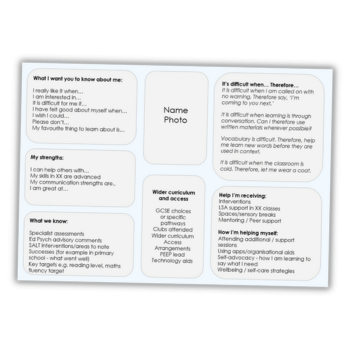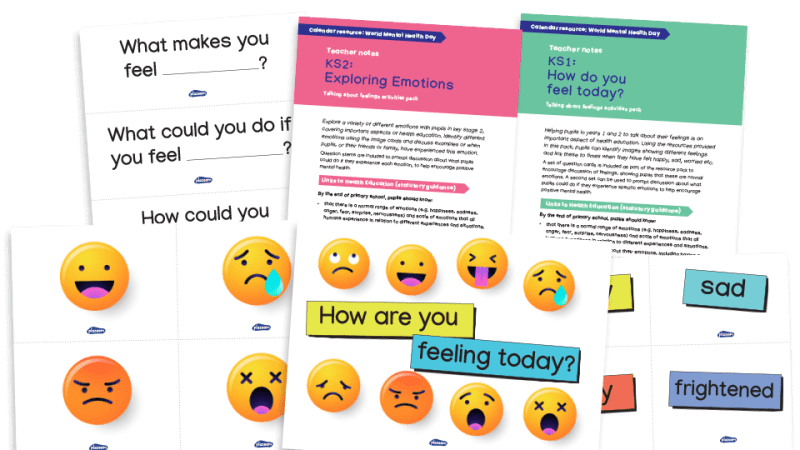EBSA – What to do when pupils are avoiding school

What is EBSA, what causes it and how best can schools deal with it? Join us as we explore this important topic…

- by Teachwire
- Classroom expertise and free resources for teachers

What is EBSA?
EBSA stands for emotionally-based school avoidance (EBSA), though it can also be referred to as ‘school refusal’.
It’s a condition whereby a child or young person has severe difficulty attending school due to emotional distress.
Unlike truancy – which tends to involve deliberate absenteeism with or without parent/carer knowledge – EBSA typically occurs with the knowledge of caregivers.
It’s rooted in underlying emotional and psychological challenges. Right now, we’re seeing a huge rise of EBSA right across the education sector.
“EBSA typically occurs with the knowledge of caregivers”
What causes EBSA?
EBSA risk factors take many different forms – but some are more obvious than others. Change or trauma, however small, has a profound effect on a child.
So moving house, the death of a pet, or the relocation of a friend can be triggers as much as separation from a parent, illness, trauma or death.
Even last-minute changes for drop-off or anxiety during transport to school can increase risk. Pupils with autism, sensory needs, ADHD and other SEND are at higher risk, with or without diagnosis.
Watch for patterns of absence or illness, too. Do they cluster in the run-up to tests or occur off your watch (perhaps in external PE lessons, lunch or after-school club)?
“Pupils with autism, sensory needs, ADHD and other SEND are at higher risk”
Check in with colleagues to pattern-spot problems in specific subjects and with specific staff. Look out for pupils who struggle or are solitary during breaks; EAL pupils and those with social communication difficulties are particularly at risk.
Stay abreast of family situations, too. Common EBSA triggers are a new baby, sibling jealousy or conflict, parenting difficulties, parental conflict or separation, and domestic abuse. Young carers are particularly vulnerable.
Why has EBSA increased since Covid?
The increase in EBSA-related issues is down to the fact that there’s greater awareness around what the condition is.
Another term previously used was ‘anxiety-based school avoidance’, but we know now that it doesn’t just stem from anxiety, but can be due to multifaceted reasons.
Many of those factors were, however, exacerbated by COVID-19 – which, combined with greater awareness and understanding around EBSA, is why it’s now being recognised much more widely across the education sector.
“We know now that it doesn’t just stem from anxiety”
We also know that year on year, we’re seeing increased mental health challenges. Currently, around one in five children and young people are likely to have a probable mental health condition.
Shifting parental attitudes during the pandemic, and changes in how people see the value of education are also contributing towards EBSA.
When all that is combined with socioeconomic pressures and reduced trust in the availability of education support, it makes families more reluctant to prioritise school attendance.
Is this a ‘new normal’?
We should always hold on to the hope that EBSA rates will eventually decrease. That’s still the ultimate goal, but we must be mindful of how the education landscape is always changing.
Many young people would feel comfortable with further integration of AI and moving more towards a permanent hybrid form of education.
“We should always hold on to the hope that EBSA rates will eventually decrease”
However, the thing we really need more of is human connection, because connecting with other people is what increases our dopamine levels.
We all need to to recognise that ESBA is very much on the rise, and likely here to stay – but also that it’s vital to get in early, and do that preventative work. And that starts with building up the knowledge and confidence of our educators.
How schools can deal with EBSA
Many schools are using psychologically informed approaches to look for signs of distress, listen to those students and families affected and then provide links to appropriate resources.
Early identification and communication is key. The most positive case studies are those where schools are working very closely with parents and caregivers to identify warning signs of EBSA early on.
Even before getting to that stage, though, effective preventative measures would include EBSA awareness training for staff, workshops for parents and increased understanding of how to manage stress and anxiety effectively among students.
Trending
“Early identification and communication is key”
The schools faring best in EBSA strategies are the ones developing those strong links with families and their local communities.
More ideas for dealing with EBSA
Diamond five activity
Use blank cards in a ‘diamond five’ activity – a structured session to help establish the most effective solutions to problems.
Encourage the pupil to identify which aspects of school cause them most anxiety and write the top five on five cards. Place the biggest barriers at the top of a diamond-shape layout and those that are problematic but less so further down.
Discuss solutions and write them on the back of each card. Common adjustments could include going with a friend or named adult; early or later entry to the lesson; not needing to change into sports kit; working in a pair rather than a group; using assistive technology; or working with a desk partition.
If things worsen, co-develop ‘What If?’ cards. Establish which specific scenarios worry the pupil most, and explore responses that would help.
“Establish which specific scenarios worry the pupil most”
Solutions can go on the reverse side of flashcards for a keyring or on a foldout pocket resource, such as these from Bromley Education.
Flex the system
‘Flexible’ and ‘individualised’ should be your watchwords if you want things to improve. We need to change the way we look at schooling for pupils with EBSA.
This calls for some flex in the system from senior management. Agree reasonable adjustments and individualise the school experience in response to the child’s needs and their triggers.
Enable staff to do home visits to build a solid partnership with families and carers to inform strategies. You could also allow a reduced timetable with shorter days, later starts or earlier finishes, and a graduated approach to building back up at the pupil’s pace.
Familiar adults are critical. Provide pupils and parents with consistent staff to meet them in the car park, at the entrance, or outside the dinner hall. There should also be a dedicated staff member for overseeing EBSA pupils.
Plan adjustments to the environment and curriculum, modifying demands without lowering expectations (see the panel at the end of this article for examples).
After extended withdrawal from school, plan how you can successfully ‘ladder’ the pupil back in. Build attendance back up in tiny increments with pauses, where needed, along the way.
Be universal and consistent
Create a one-page pen portrait outlining personalised support and save it in an easily accessible, shared area.
Communicate to all staff, not just teachers, how critical it is that they read and maintain the same strategies consistently and make them aware of the difference it can make.
Stick rigidly to the child’s new structure, ensuring predictability and consistency. Enable agency, too. If anxiety begins to build, have a dedicated circle of staff for the pupil to check in with, ensuring at least one is available at any point in the school day.
Ensure whole-school responsibility
As any aspect of school can exacerbate the problem, it’s important that EBSA is understood at a whole-school level, with a supportive culture directing good provision.
Train all staff, not just teachers, in mental health, anxiety and school avoidance, and establish a culture of sharing concerns about children who may be at risk.
“It’s important that EBSA is understood at a whole-school level”
Bring in ELSAs (Emotional Literacy Support Assistants) and specialist training on autism, ADHD and masking. Finally, emphasise that all pupils are different but equally valued and that they belong.
Increase and extend buddying, and ensure policies and procedures on behaviour, bullying and equality are clear and are followed. You can also increase pupil voice, targeting at-risk pupils; to understand EBSA better, their voices must be heard.
- Use alternative formats like mini whiteboards for responding to questions.
- Build a familiar activity from home that pupils like into the start of the day.
- Use a visual timetable and prompts, building up to a three-part First, Then, Next board.
- Offer access to quiet/low sensory spaces and a preventative break card.
- Discuss seating changes before they are implemented; keep affected children away from (and out of the sightline) of more challenging peers.
- Smile and make pupils feel welcome, particularly in corridors, playgrounds and the dinner hall.
- Build choice-based activities into the day.
- Individualise their timetable, with early exits, later starts and support options for breaktimes and lunch.
- Do not call them out to the front, and avoid sanctioning the whole class.
- Give the pupil more open-ended ways in to the curriculum and home learning tasks that are creative or opinion-based rather than strictly right or wrong.
Thank you to Liz Hawker and Kelly Hannaghan for their help with this article. Liz is a SEN specialist and parent in Kent. Follow her on X at @hawkerl1. Kelly is a mental health and wellbeing consultant and director of Mind Work Matters.










